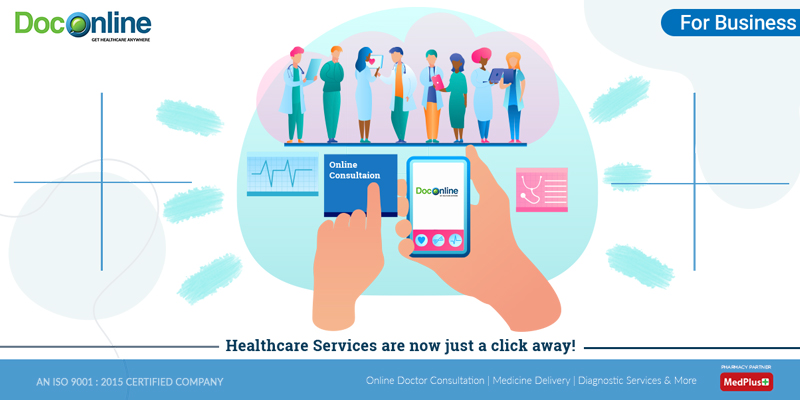Subscription Based Healthcare: Transforming the Method We Think About Health
Subscription Based Healthcare: Transforming the Method We Think About Health
Blog Article
Understanding the Cost-Effectiveness of Subscription-Based Healthcare Designs
As the healthcare landscape progresses, subscription-based designs become an engaging choice, assuring to redefine how people handle clinical costs. Assessing these versions' cost-effectiveness necessitates a nuanced contrast with standard insurance, taking into consideration both financial ramifications and individual fulfillment. While they provide openness and predictability in costs, inquiries stay about their capacity to satisfy varied healthcare requirements, especially for specialized therapies. The perspectives of doctor better complicate this formula, presenting a diverse difficulty. What does the future hold for these versions, and can they absolutely supply on their assurance of easily accessible, cost effective treatment?
Review of Subscription-Based Models
Subscription-based medical care designs, often referred to as direct health care or concierge medicine, are increasingly obtaining attention as a prospective solution to ineffectiveness within conventional medical care systems. These versions operate the principle of offering patients straight accessibility to healthcare suppliers with a annual or regular monthly cost, bypassing the need for conventional insurance policy mechanisms. This plan intends to improve patient-provider communications by reducing management problems, which typically hinder tailored and timely care.
At the core of subscription-based models is the emphasis on a much more individualized patient experience. Clients profit from enhanced access to their medical professionals, frequently consisting of next-day or same-day visits, extended examination times, and straight interaction channels such as phone or video telephone calls. This model cultivates an aggressive strategy to medical care, where clients and providers can collaboratively concentrate on preventative treatment and persistent condition management.

Price Contrast With Conventional Insurance Policy

Among the primary economic advantages of registration versions is transparency in expenses. People pay a foreseeable fee, which can streamline budgeting and financial planning. In addition, these models commonly get rid of co-pays and deductibles for protected solutions, decreasing out-of-pocket investing. On the other hand, traditional insurance might be a lot more advantageous for individuals calling for specialized treatment or expensive treatments not covered under a subscription design, as they profit from the more comprehensive coverage network and cost-sharing mechanisms.
Nevertheless, cost-effectiveness is context-dependent. While membership versions might offer savings for those mainly requiring medical care, people with persistent conditions or specialized healthcare requirements may locate standard insurance extra comprehensive. Therefore, reviewing specific healthcare requirements and potential use is critical in determining one of the most affordable alternative for individuals.
Effect On Patient Fulfillment
Individual fulfillment within subscription-based healthcare versions frequently mirrors a considerable improvement over typical insurance policy systems. Unlike conventional systems, where people may find out here now experience hold-ups in receiving treatment, subscription-based designs make certain more prompt and direct communications with health care providers.
Additionally, the openness in costs connected with subscription-based healthcare alleviates the typical frustrations related to unanticipated charges and intricate billing processes seen in typical insurance (subscription based healthcare). Patients value understanding the specific financial dedication upfront, leading to increased depend on and confidence in their medical care administration
In addition, the emphasis on precautionary treatment and wellness in membership models adds to enhanced health results, even more enhancing patient contentment. By concentrating on continuous health care rather than anecdotal care, individuals experience a more all natural and constant healthcare trip.
Moreover, the boosted provider-patient connection cultivated in these versions, identified by more time invested per patient and individualized focus, plays an important function in boosting person complete satisfaction degrees, as individuals really feel truly cared for and recognized.
Company Experiences and viewpoints
From the service provider's point of view, subscription-based health care versions offer a transformative strategy to supplying clinical services. These versions emphasize a preventative and positive health care method, permitting service providers to concentrate on extensive person care without the restrictions of conventional fee-for-service setups (subscription based healthcare). This change in emphasis frequently leads to improved individual outcomes and boosted company fulfillment, as health important source care specialists can allocate even more time and sources to patient engagement and individualized care strategies
Moreover, registration versions promote foreseeable revenue streams, which improve economic stability for doctor. This predictability enables enhanced source preparation and allowance, contributing to a much more effective healthcare delivery system. Providers can purchase personnel framework, technology, and training improvements, therefore improving the quality of treatment used.
Nonetheless, the change to subscription-based models is not without difficulties. Service providers need to adjust to new functional structures, which can entail considerable modifications in invoicing methods and person monitoring systems. In addition, there is an intrinsic need for robust data monitoring to track client outcomes and ensure high quality treatment. Despite these obstacles, lots of service providers discover that the advantages of boosted individual interaction and structured procedures outweigh the first challenges, making subscription-based versions an appealing alternative.
Future Prospects and Obstacles

A primary difficulty is regulative conformity, as registration models have to follow advancing you could try here healthcare policies and insurance policy needs. This requires continual adjustment and technology to guarantee placement with legal requirements. In addition, incorporating these models into existing health care infrastructures can be complex, needing considerable financial investments in innovation and training.
There is also the possible threat of producing injustices in healthcare gain access to, as registration versions could favor those who can manage them, leaving susceptible populaces underserved. Addressing this requires thoughtful consideration of rates techniques and subsidy systems to make sure inclusivity.
Conclusion
Subscription-based health care versions present a sensible alternative to typical insurance policy by using financial predictability and openness, specifically benefiting people with chronic conditions or frequent medical care demands. The cost-effectiveness of these designs is contingent upon individual medical care usage patterns and circumstances.
Subscription-based medical care designs, often referred to as direct primary care or attendant medication, are increasingly obtaining attention as a potential option to inadequacies within typical health care systems. Unlike typical systems, where clients could experience delays in getting treatment, subscription-based designs make certain more direct and prompt interactions with medical care providers.
These models highlight a proactive and preventative medical care strategy, enabling suppliers to concentrate on thorough patient care without the restraints of typical fee-for-service setups. As these models continue to acquire traction, they provide the potential to transform individual accessibility to care, simplify solution distribution, and optimize healthcare costs.Subscription-based healthcare designs provide a practical choice to standard insurance policy by offering monetary predictability and transparency, specifically benefiting people with persistent conditions or frequent health care requirements.
Report this page